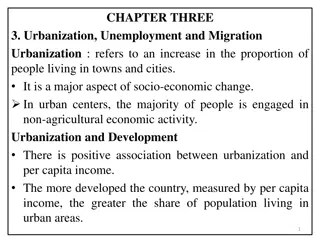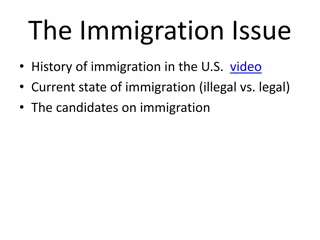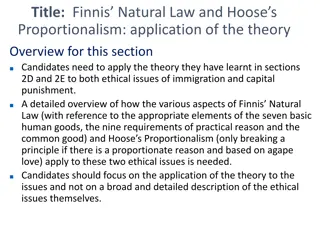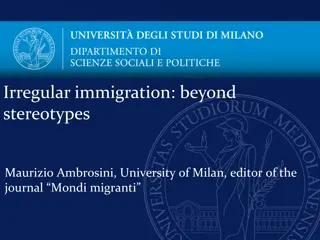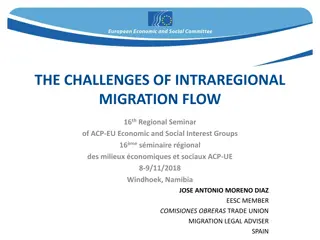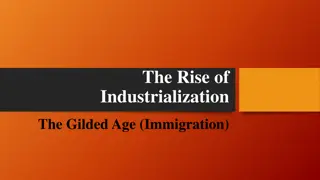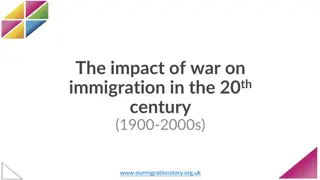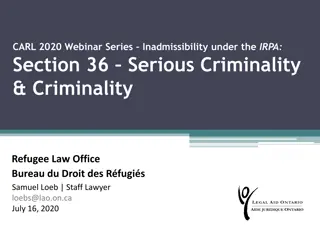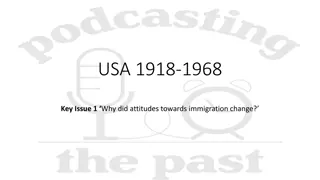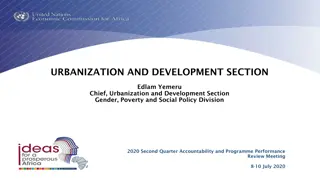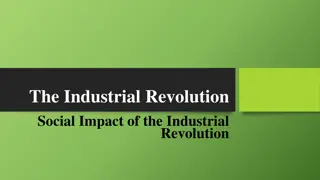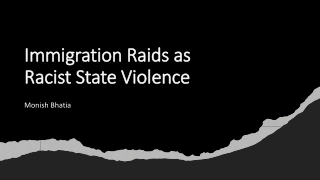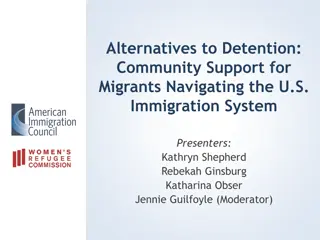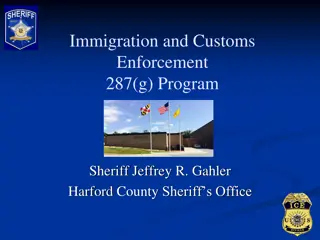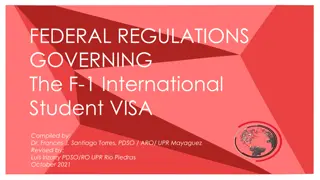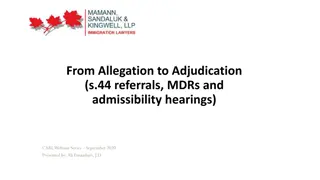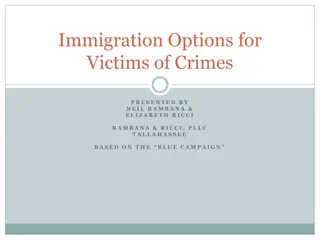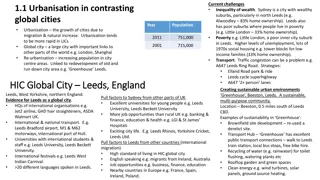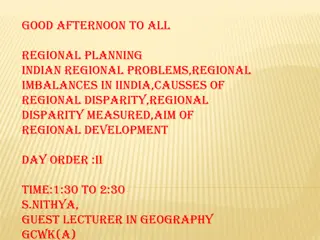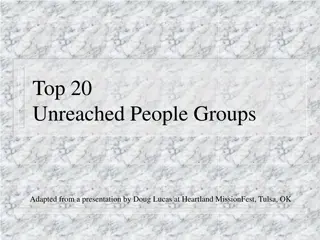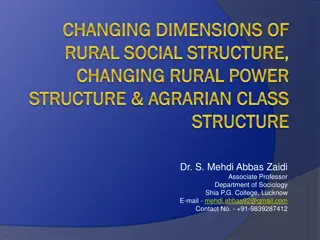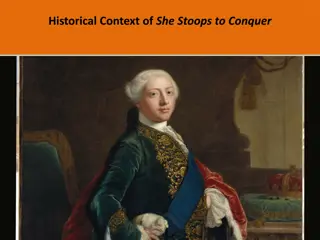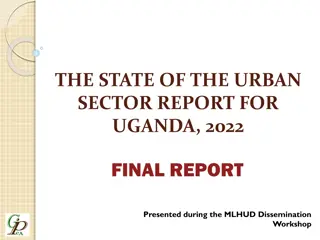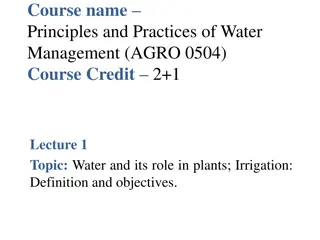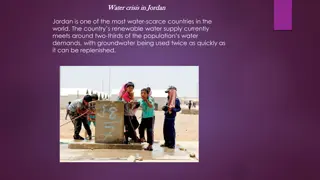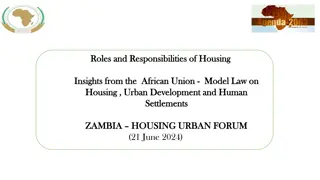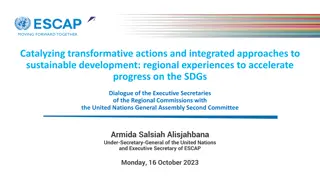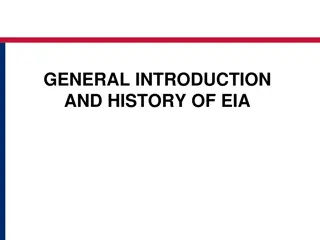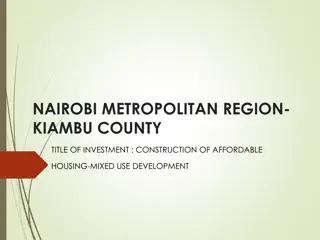Challenges of Urbanization and Immigration in Historical Perspective
The rapid urbanization, immigration, and growth of urban population between 1870 and 1920 presented significant challenges such as housing, sanitation, transportation, and job availability. Immigrants settled in cities due to affordability and job opportunities in factories. The Americanization Movement aimed to teach immigrants citizenship skills. Ethnic communities developed, allowing immigrants to maintain their traditions but leading to overcrowding. This historical period reflects the complexities of migration from rural to urban areas and the social responses to urban growth.
Download Presentation

Please find below an Image/Link to download the presentation.
The content on the website is provided AS IS for your information and personal use only. It may not be sold, licensed, or shared on other websites without obtaining consent from the author. Download presentation by click this link. If you encounter any issues during the download, it is possible that the publisher has removed the file from their server.
E N D
Presentation Transcript
Urbanization Associated with Problems Dr.K.Indhira Guest Lecturer, Department of Geography, Govt College for Women (Autonomous), Kumbakonam
Immigration Large number of immigrants Through Ellis Island in New York Through Angel Island in San Francisco 20 million Europeans between 1870 and 1920 200,000 Chinese between 1870 and 1920 Reasons included Poverty in home lands Opportunities Freedom
Growth of Urban Population Inventions and technological advance allowed cities to grow Factories Skyscrapers Immigration Most moved to the cities, expanding population From 10 million to 54 million between 1870 and 1920
This is the topic of this section The Challenges of Urbanization BIG IDEA The rapid growth of cities forced people to deal with problems of housing, sanitation, transportation, jobs, water, and sanitation.
Why did immigrants settle in cities? Cities were the cheapest places to live. It was closest to where they arrived in the United States Especially in New York (Ellis Island) Factories offered many jobs to unskilled laborers
How many immigrants? By 1890, twice as many Irish in New York as in Dublin, Ireland By 1910, immigrant families made up more than half of population in 18 major American cities
The Americanization Movement Definition: Social movement by government and citizen groups to teach immigrants skills needed for citizenship English literacy History Government Cooking Etiquette
Immigrant response Many did not want to abandon their traditions Ethnic communities developed Enabled them to speak own language and customs But quickly got overcrowded
Migration from Rural areas Many moved from rural areas because Technology reduced number of laborers needed Escape racial violence in the South Escape political oppression To seek better jobs
Urban Problems Housing lack of available housing led to many families living in tenements Poor people needed to get around = cities developed mass transit such as subways and street cars Water Lack of piping in cities led to little or no running water Diseases Too many people in a small space, lack of sanitation, medical care Sanitation = Garbage on streets, outhouses Crime Fires
Reform Movements Social gospel movement Preached salvation through service to the poor Settlement houses Community centers to provide assistance to the poor Run mainly by middle-class, educated women Taught courses Provided medical care Jane Adams most famous of the social gospel movement founded Hull House in Chicago
There's no end to the effects that urbanization can have on water bodies. Millions of people; landscape manipulation; waste material; dumping of chemicals and fertilizers; withdrawing water for peoples' uses. As you expect, urbanization rarely improves water quality, but in order to prevent problems, one needs to understand how urbanization affects the local waters. Water Science School HOME Water Quality topics Urbanization and Water Quality To some degree, "urbanization" (people living together in groups), has been taking place since ancient times. As populations rose and people mastered techniques to grow food in fixed locations, groups of people became settlements and then towns and cities. In the United States, the speed of this urbanization picked up after World War II, and now many urban areas are growing at a record pace. What are the effects on the local hydrologic system when a rural area is turned into an area full of housing developments, shopping centers, industrial buildings, and roads? In the table below, the left side shows changes in land and water use when urbanization occurs, and the right side shows the possible effect on the local water system. Beginning of urbanization
Change in Land Use: Remove trees and vegetation. Begin building houses, some with sewers and some with septic tanks. Begin drilling wells. Effect on Water System: More storm runoff and erosion because there is less vegetation to slow water as it runs down hills. More sediment is washed into streams. Flooding can occur because water- drainage patterns are changed. Continuing urbanization Change in Land Use: Urbanization is finished by the addition of more roads, houses, and commercial and industrial buildings. More wastewater is discharged into local streams. New water-supply and distribution systems are built to supply the growing population. Reservoirs may be built to supply water. Some stream channels are changed to accommodate building construction. Industries might drill some deep, large-capacity wells.
Effect on Water System: More pavement means less water will soak into the ground, meaning that the underground water table will have less water to recharge it. This will lower the water table. Some existing wells will not be deep enough to get water and might run dry. The runoff from the increased pavement goes into storm sewers, which then goes into streams. This runoff, which used to soak into the ground, now goes into streams, causing flooding. Changing a stream channel can cause flooding and erosion along the stream banks. More sewage is discharged into streams that weren't "designed by nature" to handle that much water. The use of too many large wells can lower the underground water table. This can cause other wells to run dry, can cause saltwater to be drawn into drinking-water wells, and can cause land that was formerly "held up" by underground water to subside, resulting in sinkholes and land subsidence. Local community takes steps to fix some problems
Change in Land Use: Improvements in the storm drainage system are made. Wells are drilled to recharge underground aquifers. Projects to reuse wastewater might be started. Ecological-designed recharge ponds disperse some storm drainage to artificially recharge shallow aquifers. Effect on Water System: New storm-drainage systems reduce flooding during storms. Less damage is done to basements, yards, and streets. Water is actually injected into recharge wells to put water back into underground aquifers. Reusing wastewater means less pollution, more water conservation, and additional water for recharging aquifers.


